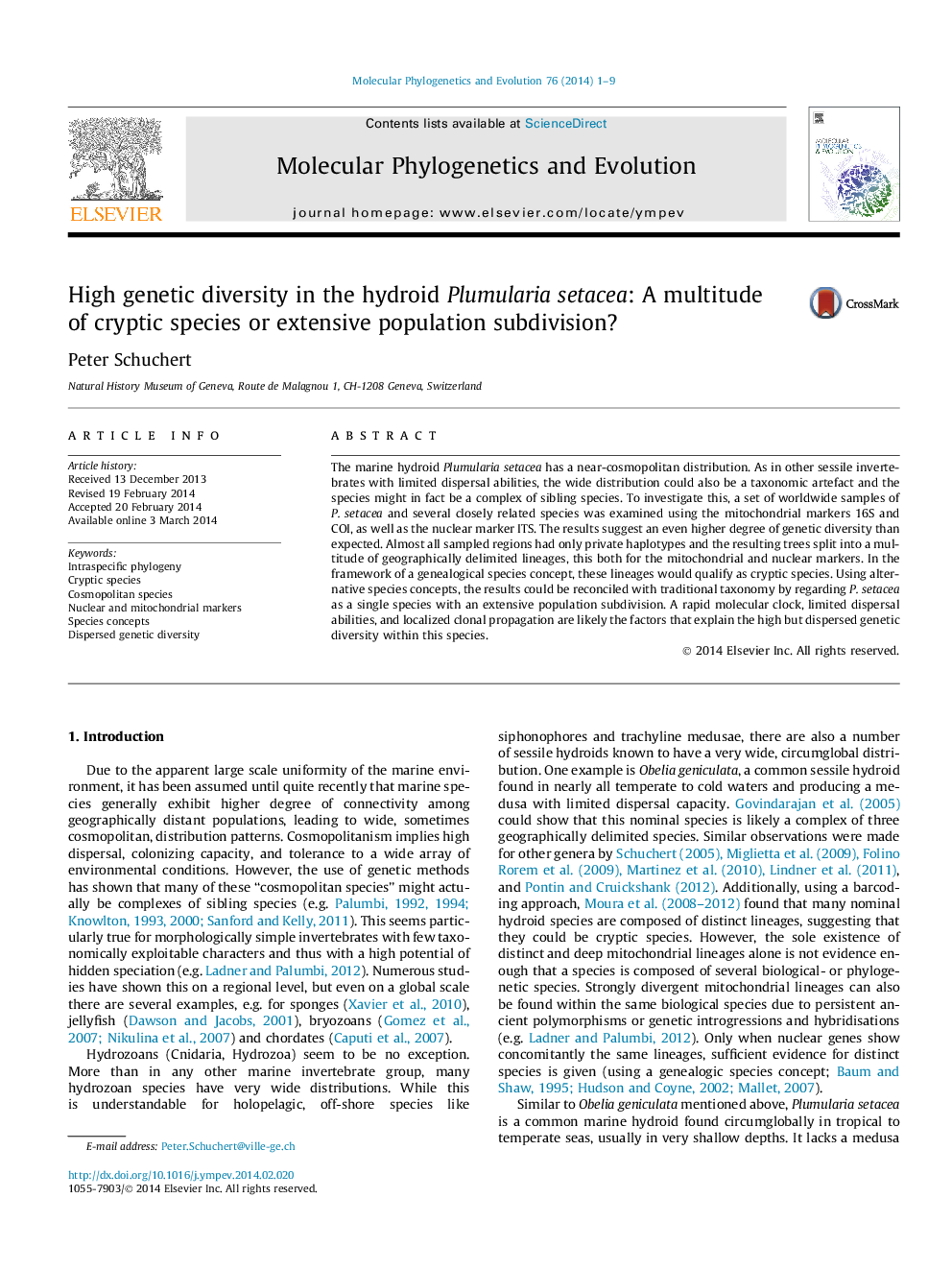| Article ID | Journal | Published Year | Pages | File Type |
|---|---|---|---|---|
| 2833870 | Molecular Phylogenetics and Evolution | 2014 | 9 Pages |
•Intraspecific phylogeny of a cosmopolitan marine invertebrate.•Based on mitochondrial (16S, COI) and nuclear (ITS) genes.•Very high but dispersed genetic diversity, private haplotypes for most localities.•Results can be interpreted as a multitude of cryptic species or very strong population subdivision.
The marine hydroid Plumularia setacea has a near-cosmopolitan distribution. As in other sessile invertebrates with limited dispersal abilities, the wide distribution could also be a taxonomic artefact and the species might in fact be a complex of sibling species. To investigate this, a set of worldwide samples of P. setacea and several closely related species was examined using the mitochondrial markers 16S and COI, as well as the nuclear marker ITS. The results suggest an even higher degree of genetic diversity than expected. Almost all sampled regions had only private haplotypes and the resulting trees split into a multitude of geographically delimited lineages, this both for the mitochondrial and nuclear markers. In the framework of a genealogical species concept, these lineages would qualify as cryptic species. Using alternative species concepts, the results could be reconciled with traditional taxonomy by regarding P. setacea as a single species with an extensive population subdivision. A rapid molecular clock, limited dispersal abilities, and localized clonal propagation are likely the factors that explain the high but dispersed genetic diversity within this species.
Graphical abstractFigure optionsDownload full-size imageDownload as PowerPoint slide
